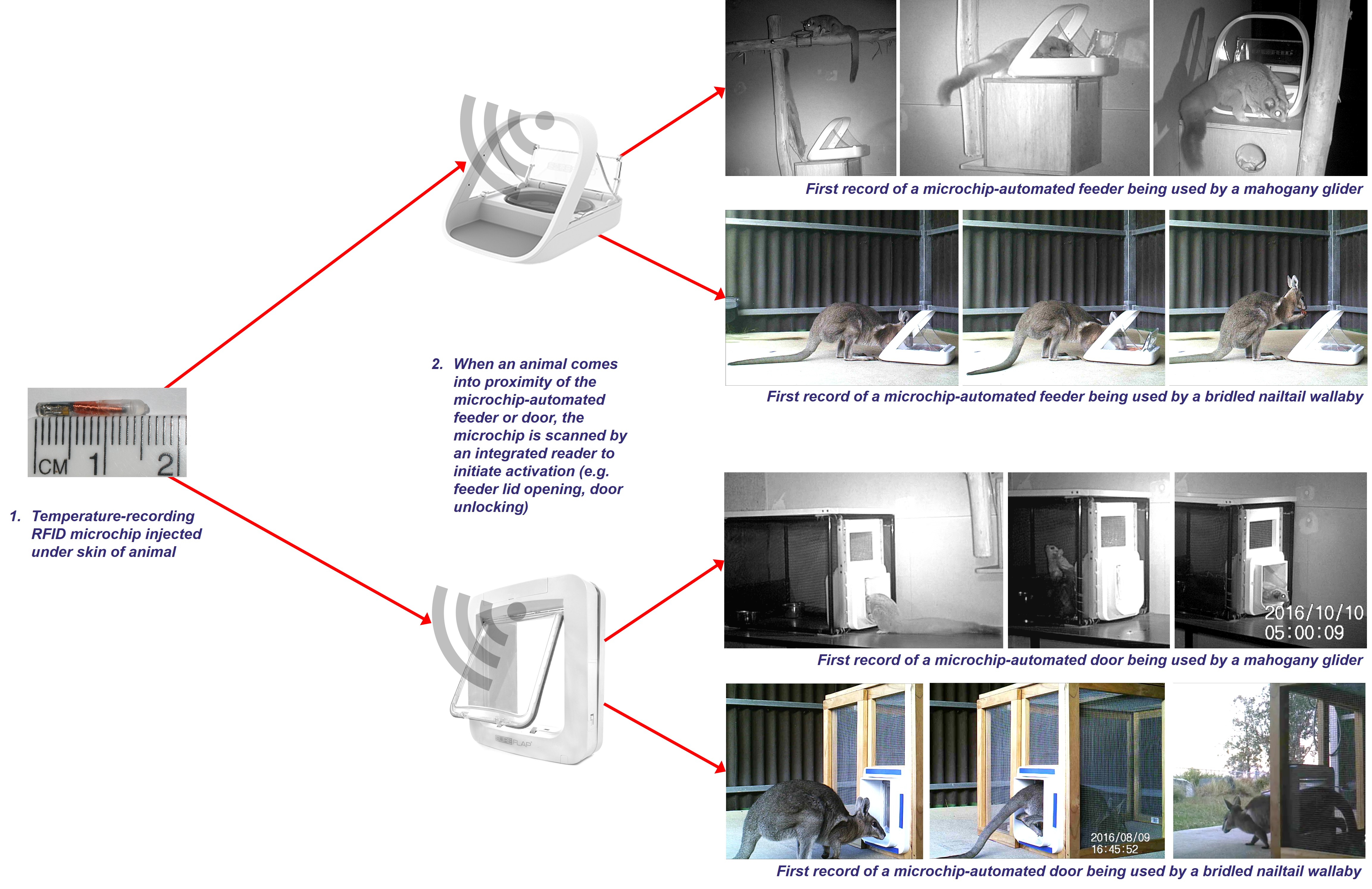Background
Integrating technological advances with established techniques of wildlife management will lead to more effective conservation strategies (Marvin et al. 2016). One such form of technology that has been used in livestock management since the 1970s (Eradus & Jansen 1999) but only recently with wildlife, involves automating husbandry processes for individual animals based on radio frequency identification (RFID) technology. The first use of RFID-automated technology with wildlife was by captive primates using a prototype RFID microchip-automated feeder (Hoy 2010). More recently commercially available microchip-automated devices were developed for companion animals (e.g. SureFlap®), and have potential applications for wildlife. There is a high level of zoo industry support to automate husbandry processes on an individual animal basis using implantable RFID microchips linked with electronic equipment (Hoy et al. 2010).
Microchip-automated technology can provide captive wildlife with an extensive and unpredictable variety of food, enrichment and access to space on an individual animal basis, to more accurately replicate aspects of the natural environment (Hoy et al. 2010) which will improve their welfare. There is also potential to utilise microchip-automation as a tool in wildlife soft-release programs by facilitating individual animal access to resources (e.g. food, refuge from predators) while also allowing ongoing monitoring of released animals.
Aims
•Determine whether captive Australian native wildlife can be trained to use microchip-automated devices (e.g. feeders and doors)
•Investigate the influence of microchip-automated devices on the behaviour of native wildlife
•Explore the potential for microchip-automated devices to be used by native wildlife in reintroduction programs
Methodology
Study animals are trained to use a microchip-automated feeder or door by gradually exposing them to sound and movement associated with the device until it is fully operational. Feed is used to attract the animals to the devices.
Animal interactions with the microchip-automated devices are recorded using remote surveillance cameras. Activity budgets are used to compare study animals’ behaviour before, during and after exposure to microchip-automated devices.
Expected outcomes
Microchip-automated technology, as a tool to improve the management of captive and released wildlife, is a novel concept. Identification of the benefits and limitations of training captive Australian native wildlife to use microchip-automated devices will direct future development and applications of the technology.
This research will provide valuable information about the potential for microchip-automated technology to be integrated with traditional captive wildlife management methods and reintroduction programs.
Using microchip-automated technology to provide released wildlife with short-term access to supplementary feed and areas of refuge from predators, while also monitoring populations should improve the success of wildlife reintroduction programs.
References
Eradus, WJ & Jansen, MB 1999, 'Animal identification and monitoring', Computers and Electronics in Agriculture, vol. 24, pp. 91-8.
Hoy, JM 2010, 'Microchip-automated husbandry as enrichment for captive animals', PhD thesis, The University of Queensland, Australia.
Hoy, JM, Murray, PJ & Tribe, A 2010, 'The potential for microchip-automated technology to improve enrichment practices', Zoo Biology, vol. 29, no. 5, pp. 586-99.
Marvin, DC, Koh, LP, Lynam, AJ, Wich, S, Davies, AB, Krishnamurthy, R, Stokes, E, Starkey, R & Asner, GP 2016, 'Integrating technologies for scalable ecology and conservation', Global Ecology and Conservation, vol. 7, pp. 262-75.
Acknowledgements
Research students: Megan Edwards, Sabrina Muns, Jessica Hobart, Erica Yi, Kavini Wijesooriya



